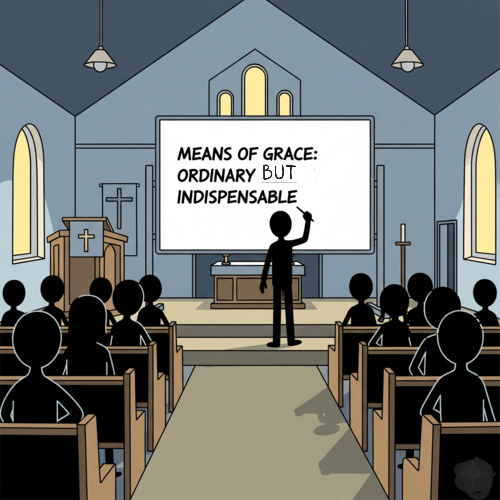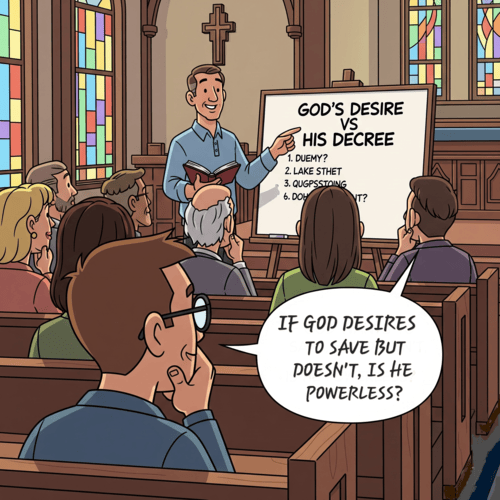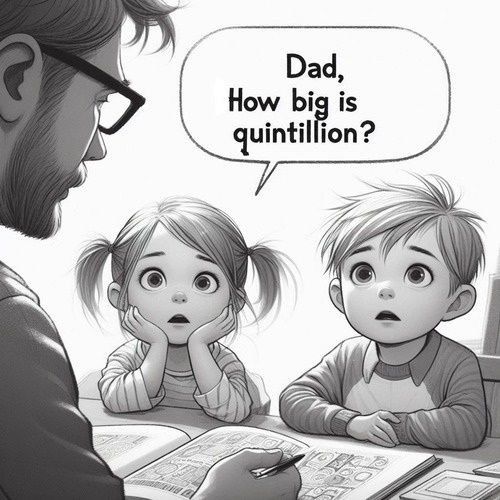Harmony or Contradiction: Are Old and New Testament Ethics in Conflict?
FROM GENESIS TO REVELATION: TRACING CONSISTENCY IN THE ETHICAL FRAMEWORK OF SCRIPTURE
Are Old and New Testament Ethics in Conflict? The Bible narrative spans centuries of human history, revealing God’s redemptive plan through diverse historical contexts. Howev r, this has led many to question the apparent variations in the moral landscape between the Old and New Testaments—from what seem to be harsh legal prescriptions in the Old to radical teachings of grace and love in the New.
The perceived discrepancies raise critical questions:
- How can an immutable God appear to change moral standards?
- Why do ethical guidelines seem so different across biblical epochs?
- Can we reconcile the seemingly punitive Old Testament portrayal with the New Testament’s message of love?
These aren’t mere academic questions but touch the heart of our understanding of divine revelation, biblical interpretation, and theological coherence.
FIRST, REMEMBER OUR THEOLOGICAL FOUNDATION
Remember the Unchanging Core of God’s Character: At the heart of the Christian faith lies the profound doctrine of divine immutability. This principle, rooted deeply in Scripture, affirms God’s essential nature remains constant despite the dynamic unfolding of redemptive history. As Malachi 3:6 declares, “For I the Lord do not change,” emphasising God’s interactions with humanity may appear varied, but His fundamental character remains eternally consistent.
Immutability does not suggest a static, inflexible divine presence, but rather a profound consistency of moral character, purpose, and love. This means God’s responses to human situations may adapt to specific historical and covenantal contexts, but the underlying moral and redemptive intentions remain unaltered.
And Remember Progressive Revelation: The Unfolding of Divine Purpose
Progressive revelation also represents a critical theological concept that helps us understand biblical diversity. Rather than viewing Scripture as a monolithic, unchanging legal document, we recognise it as a dynamic narrative of God’s redemptive engagement with humanity.
This approach understands biblical revelation as a gradual unveiling of God’s redemptive plan. Each covenant builds upon previous revelations, creating a coherent theological trajectory that moves towards ultimate restoration and reconciliation. Consider how divine revelation progresses:
- Creation Covenant: Establishing humanity’s original relationship with God
- Noahic Covenant: Preserving humanity after divine judgment
- Abrahamic Covenant: Initiating a specific redemptive lineage
- Mosaic Covenant: Establishing a legal framework for a covenant people
- Davidic Covenant: Promising a messianic redemptive king
- New Covenant: Fulfilling redemptive promises through Christ’s work
Each covenant does not replace but builds upon and fulfils previous revelations. The New Testament does not negate Old Testament revelation but completes and transforms it, revealing deeper spiritual realities that were previously veiled.
NOW, LET’S ADDRESS EACH CHARGE OF ETHICAL CONFLICT
- Charge of Discrepancy in Moral Laws and Legal Prescriptions: Critics argue the Old Testament legal frameworks appear arbitrary, overly punitive, and inconsistent with New Testament grace.
The Answer: The Mosaic legal system must be understood within its redemptive-historical context. Far from being arbitrary, these laws represented a structured framework for a new covenant community, pedagogical instruments revealing human moral inability, and typological preparations for the ultimate redemption in Christ.
Galatians 3:24 describes the law as a “tutor” leading us to Christ. The legal prescriptions were never intended as permanent moral absolutes, but as a temporary covenant administration pointing towards a more profound spiritual reality. Christ fulfils, not abolishes, these laws by revealing their deeper spiritual intentions and transforming external compliance into internal transformation.
- Charge of Conflict in Sexual Ethics: Sceptics highlight apparent variations in sexual ethics between the testaments, particularly regarding marriage, divorce, and sexual boundaries.
The Answer: While surface-level variations exist, fundamental sexual ethics demonstrate remarkable continuity: Genesis establishes monogamous, complementary marriage as the original design. Both testaments consistently affirm sexual intimacy within covenant marriage. And sexual holiness remains a consistent divine expectation.
Christ’s teachings frequently reaffirm and deepen original created intentions. In Matthew 19:4-6, He explicitly references Genesis, emphasising original divine design over subsequent legal accommodations.
- Charge of Discrepancy in Treatment of Marginalised Populations: Critics argue the Old Testament appears less compassionate towards marginalised populations compared to the New Testament’s inclusive approach.
The Answer: Careful examination reveals a consistent redemptive trajectory of inclusion and compassion. Old Testament law repeatedly commanded compassion towards strangers, widows, and orphans. Prophetic tradition consistently critiqued social injustice. And the redemptive narrative progressively expands covenant community’s boundaries.
The New Testament represents the fullest expression of this inclusive trajectory, not a radical departure. Jesus’ ministry consistently demonstrated radical inclusion, revealing the heart of God’s redemptive purposes. Theological continuity emerges through consistent divine concern for the oppressed, progressive revelation of the covenant community’s expansiveness, and fulfillment of salvation promises to all nations.
- Charge of Discrepancy In Warfare and Conflict: Old Testament warfare, particularly conquest narratives, appear morally troubling when compared to the New Testament’s teachings of peace.
The Answer: Warfare narratives must be understood through specific redemptive-historical contexts. These accounts aren’t universal moral templates but specific divine interventions within particular historical moments. The New Testament transforms these martial metaphors into spiritual warfare, emphasising redemption over physical conquest. Christ’s kingdom advances through sacrificial love, not physical violence.
Conclusion: A Comprehensive Theological Perspective
As we view Scripture through the lens of progressive revelation and covenant theology, the apparent moral discrepancies dissolve into a rich, coherent narrative of divine redemption. God’s character remains unchanging: consistently holy, just, merciful, and redemptive. The variations we observe aren’t contradictions but deliberate, redemptive adaptations suited to specific historical and spiritual contexts.
The Reformed theological tradition offers a nuanced hermeneutical approach that embraces biblical complexity while maintaining a robust doctrine of divine consistency. By understanding Scripture as a progressive, covenantal revelation, we move beyond simplistic readings that demand rigid uniformity. Ultimately, the apparent moral variations between the testaments do not represent divine inconsistency but reveal the profound, patient, and contextually responsive nature of God’s redemptive love.
Our task isn’t to flatten these rich nuances but to approach Scripture with reverence, scholarly rigour, and a deep commitment to understanding God’s unfolding redemptive purpose.
Are Old and New Testament Ethics in Conflict?—Related FAQs
- How do we reconcile God’s apparent violence in the Old Testament with New Testament teachings of love? God’s actions must be understood within specific redemptive-historical contexts, not as universal moral templates. The Old Testament’s accounts frequently serve typological purposes, representing spiritual realities and divine judgment against systemic evil, while the New Testament reveals the fullest expression of God’s redemptive love through Christ’s sacrificial work.
- Does progressive revelation mean that God’s moral standards are relative or changeable? Progressive revelation does not imply moral relativism, but rather a purposeful unfolding of divine intentions consistent with God’s unchanging character. Each stage of revelation builds upon previous revelations, revealing deeper spiritual realities while maintaining fundamental moral continuity rooted in God’s eternal nature.
- How should Christians today interpret and apply Old Testament laws? We must approach Old Testament laws through a Christo-centric hermeneutic, recognising Christ’s fulfillment of the law’s deeper spiritual intentions. The moral law remains relevant, while ceremonial and civil laws find their ultimate purpose and transformation in Christ’s redemptive work.
- Why did God seem to tolerate practices in the Old Testament that appear unethical by contemporary standards? Divine revelation occurs within specific cultural and historical contexts, progressively revealing moral and spiritual truths. God’s accommodation does not represent moral endorsement but a patient, pedagogical approach to revealing ultimate redemptive purposes, gradually transforming human understanding and social structures.
- How can we explain the apparent differences in divine judgement between the testaments? Divine judgement must be understood as a consistent response to human rebellion, manifested differently across redemptive history. The Old Testament’s more immediate judgements typologically represent spiritual realities that the New Testament reveals as ultimately resolved through Christ’s atoning work, demonstrating both divine justice and mercy.
Are Old and New Testament Ethics in Conflict?—Our Related Posts
Editor's Pick

The Nashville Statement: Why Affirm It Despite Media Backlash?
WHY DO REFORMED CHRISTIANS STAND BY THIS STATEMENT ON MARRIAGE AND GENDER? When the Nashville Statement was released in 2017, [...]

Who Is Belial? Solving The 2 Corinthians 6:15 Mystery
Belial: This name from the pages of Scripture chills the soul. Who is this mysterious figure Paul invokes in 2 [...]

Celibacy Or Castration: What Jesus Really Means in Matthew 19:12
One of Scripture's most shocking misinterpretations led theologian Origen to castrate himself in the third century. His tragic mistake? Taking [...]

Philippians 4:13: Did Paul Really Mean We Can Do ALL Things?
"I can do all things through Christ who strengthens me." It's on gym walls, graduation cards, and motivational posters everywhere. [...]

The Ordinary Means of Grace: Why Are They Indispensable?
ORDINARY MEANS FOR EXTRAORDINARY TRANSFORMATION What if God's most powerful work in believers' lives happens through the most ordinary activities? [...]

Is the Bible God’s Word? Or Does It Only Contain God’s Word?
The authority of Scripture stands at the crossroads of modern Christianity. While some argue the Bible merely contains God’s Word [...]

Will We Remember This Life in Heaven? What Isaiah 65:17 Means
"Will I remember my spouse in heaven? My children? Will the joy we shared on earth matter in eternity?" These [...]

From Empty to Overflow: The Abundant Life Jesus Promised
(AND WHY YOU SHOULDN’T SETTLE FOR LESS) We're surviving, but are we thriving? If we're honest, there's a gap between [...]

What Does Jesus Save Us From?
THREE BIBLE TRUTHS ABOUT SALVATION "Jesus saves." We’ve seen it on bumper stickers, heard it shouted at sporting events, maybe [...]

If God Wants Everyone Saved, Why Aren’t They?
THE REFORMED VIEW ON GOD’S DESIRE VS HIS DECREE The question haunts every believer who has lost an unbelieving loved [...]
SUPPORT US:
Feel the Holy Spirit's gentle nudge to partner with us?
Donate Online:
Account Name: TRUTHS TO DIE FOR FOUNDATION
Account Number: 10243565459
Bank IFSC: IDFB0043391
Bank Name: IDFC FIRST BANK






